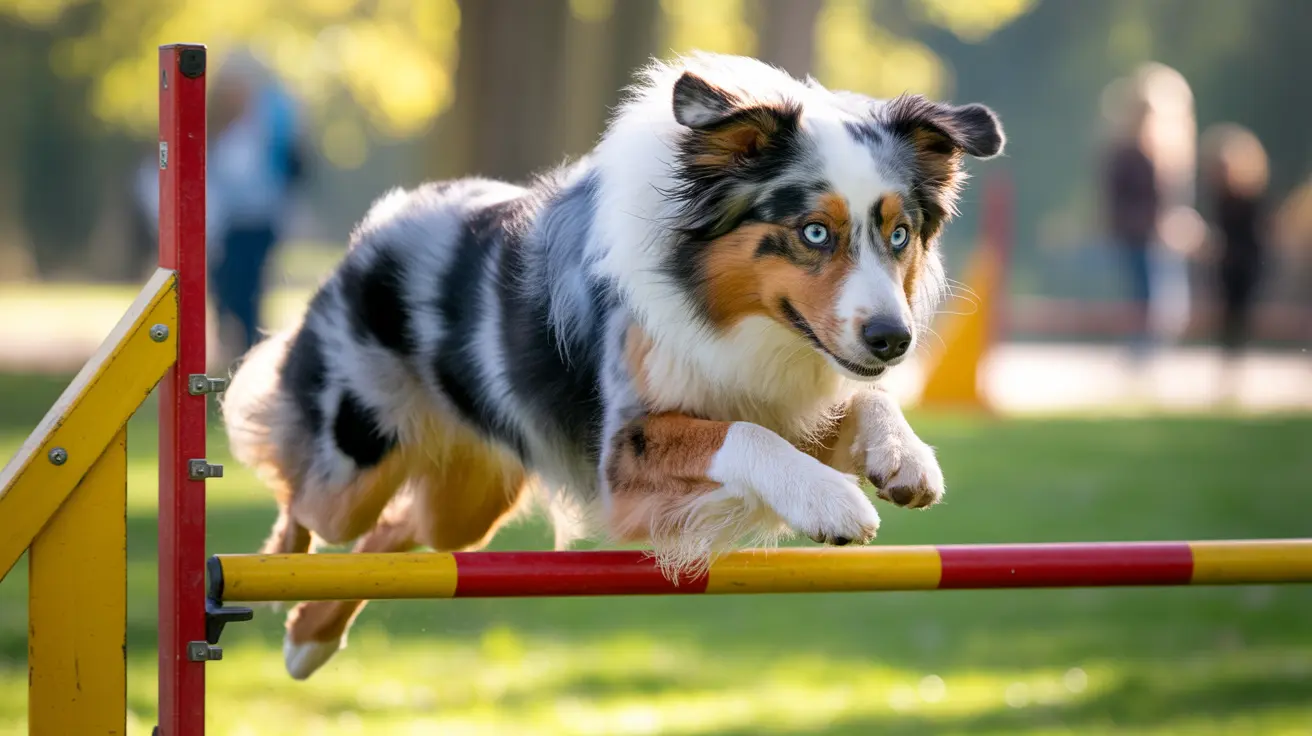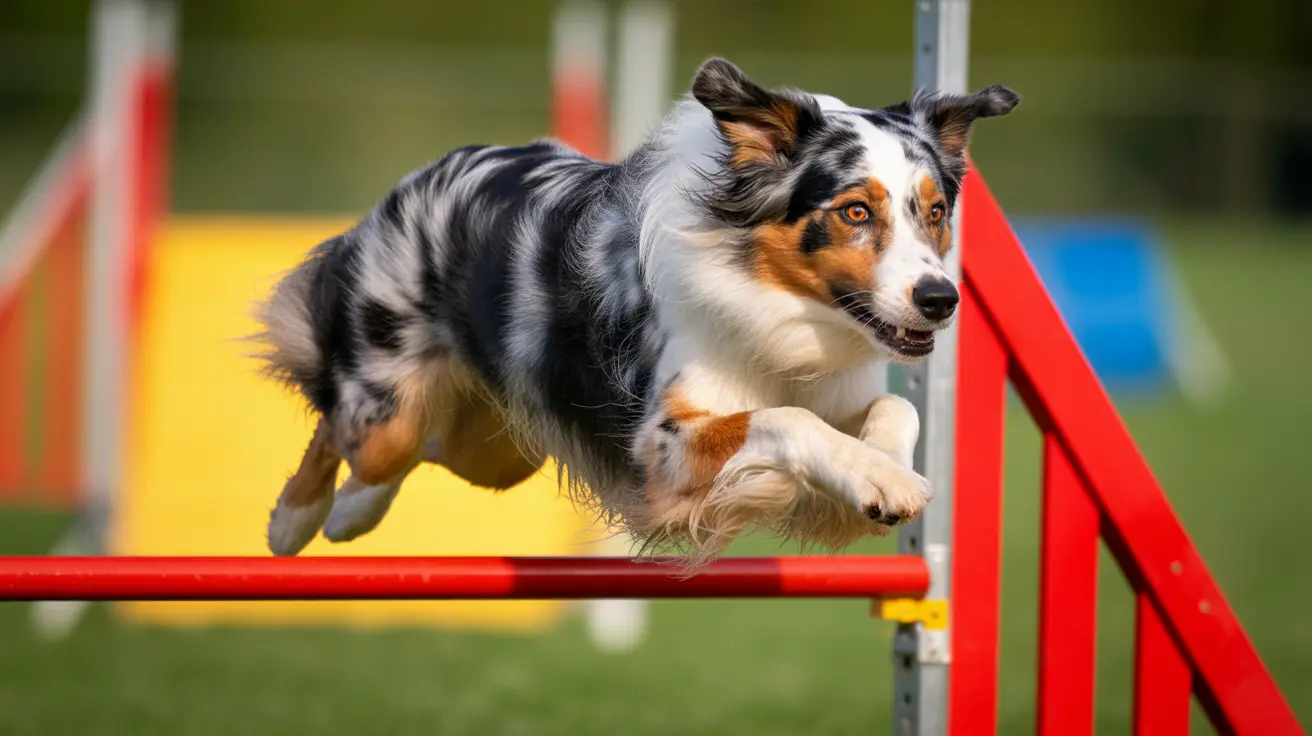When your beloved four-legged companion starts limping, it can be a source of significant concern for any pet owner. Dog limping is a common issue that requires careful attention, as it can signal anything from a minor paw injury to serious underlying health conditions. Understanding the nature of your dog's limp is crucial for determining the appropriate course of action and ensuring your pet receives the care they need.
This comprehensive guide will help you navigate the complexities of dog limping, from identifying the cause to implementing effective treatment strategies. Whether you're dealing with a sudden acute limp or managing a chronic condition, knowing when to seek veterinary care and how to provide appropriate home care can make all the difference in your dog's recovery.
Understanding Different Types of Dog Limping
Acute Limping
An acute dog limp occurs suddenly, often following a specific incident or injury. This type of limping might result from stepping on something sharp, playing too vigorously, or landing awkwardly. While some acute limps may improve with rest, others require immediate veterinary attention, especially if accompanied by visible pain or inability to bear weight. Recognizing the difference between a minor incident and a serious injury is important, as untreated acute injuries can worsen over time.
Chronic Limping
Chronic dog limping persists for two weeks or longer and often indicates an underlying condition such as arthritis in dogs or degenerative joint disease. These cases require professional evaluation to determine the root cause and develop an appropriate treatment plan. Chronic limping may be subtle at first, gradually worsening or flaring up with increased activity or weather changes. Early identification and management are crucial for improving the long-term quality of life for your pet.
When to See a Vet for Dog Limping
Knowing when to seek veterinary care is crucial for your pet's well-being. If you notice any of the following signs, schedule a veterinary visit promptly to ensure timely diagnosis and intervention:
- Severe limping or complete inability to bear weight
- Limping accompanied by fever or lethargy
- Visible swelling or deformity
- Limping that persists beyond 24 hours
- Signs of pain such as whining or aggressive behavior
In addition to these signs, consult your veterinarian if your dog is unable to settle comfortably, refuses to eat or drink, or if there is bleeding, an open wound, or any significant change in temperament. Early veterinary assessment can prevent complications and support faster recovery.
Common Causes of Dog Limping
Physical Injuries
- Muscle strains and sprains
- Broken bones or fractures
- Torn ligaments
- Dog paw injury from foreign objects
Physical injuries are among the most frequent causes of limping in dogs. Strains or sprains can result from rough play, jumping, or slipping, and often lead to swelling and tenderness. Fractures and torn ligaments, such as cranial cruciate ligament injuries, are more severe and commonly require surgical intervention. Foreign objects like thorns or glass may embed in the paw, causing sudden discomfort and a visible limp. Regularly inspecting your dog’s feet after walks can help prevent such issues.
Medical Conditions
Several health conditions can lead to lameness in dogs, including:
- Arthritis
- Hip dysplasia
- Joint infections
- Nerve damage
- Tick-borne diseases
Arthritis, a degenerative joint disease, is especially common in older dogs, causing chronic pain and stiffness. Hip dysplasia, often seen in larger breeds, can lead to altered gait and persistent limping. Joint infections may arise due to bacteria entering through wounds, requiring prompt veterinary care. Nerve damage and illnesses like Lyme disease or other tick-borne pathogens can also disrupt normal movement and cause limping.
Assessing Your Dog's Limp
A proper dog limp assessment includes the following steps to help you and your veterinarian determine the underlying issue:
- Observing the pattern of limping: Note whether the limp is constant, intermittent, or worse at certain times of day or after specific activities.
- Checking for visible injuries: Examine your dog’s paws, legs, and joints for cuts, swelling, heat, or abnormal positioning.
- Noting any changes in behavior: Watch for signs of distress such as licking or chewing at a limb, reluctance to walk, or withdrawal.
- Monitoring eating and drinking habits: A loss of appetite, increased thirst, or change in bathroom habits may indicate systemic problems contributing to the limp.
Systematically evaluating your dog's condition allows for more accurate information when consulting a veterinarian and helps guide at-home care measures.
Treatment Options for Dog Limping
Conservative Management
For mild cases, dog limping treatment may be managed at home under veterinary guidance and could include:
- Rest and restricted activity
- Cold or warm compresses, applied to reduce swelling or soothe muscles
- Gentle massage if approved by a vet
- Prescribed pain medication for comfort
Providing your dog with a quiet, comfortable space and minimizing stairs or jumping can support a faster recovery. Always avoid giving human medications, as many are toxic to dogs.
Professional Treatment
More severe cases might require advanced veterinary intervention, including:
- Physical therapy for strengthening and mobility
- Surgery to repair fractures or torn ligaments
- Long-term medication for chronic conditions like arthritis
- Rehabilitation exercises customized for your dog’s injury and health status
Veterinarians may recommend advanced imaging, such as X-rays or ultrasounds, to diagnose underlying issues. Timely and appropriate treatment significantly improves outcomes and helps prevent relapses.
Prevention Strategies
Regular Maintenance
To prevent dog leg injuries, incorporate the following habits into your pet care routine:
- Maintain a healthy weight to reduce joint stress
- Provide regular, appropriate levels of exercise to build muscle strength and flexibility
- Keep your dog’s nails trimmed to prevent splaying and sliding on floors
- Check paws after walks for cuts, debris, or lodged objects
Routine grooming and health checks help catch potential problems early, minimizing the risk of serious injuries or limping episodes.
Environmental Safety
Create a safe environment by:
- Removing hazardous objects from play and walk areas to avoid cuts and impacts
- Using appropriate walking surfaces, as slippery floors or rough terrain can lead to accidents
- Providing proper nutrition to support joint health and overall well-being
- Ensuring adequate rest between vigorous activities to allow your dog’s body to heal and recover
Preventive measures not only reduce the likelihood of injuries but also contribute to your dog's overall happiness and quality of life.
Frequently Asked Questions
- What are common causes of limping in dogs? Injury, arthritis, and paw issues are the most common causes. Trauma, overexertion, and underlying musculoskeletal or neurological disorders can also contribute.
- How can I assess the severity of my dog's limp? Check for swelling, heat, wounds, and observe if your dog can bear weight. Take note of any additional symptoms such as licking, whimpering, or changes in activity level.
- When should I take my limping dog to the vet? See a vet if the limp is severe, lasts more than 24 hours, or your dog is in pain. Immediate attention is needed for visible wounds, fractures, or inability to walk.
- What are typical treatments for dog limping? Rest, anti-inflammatory medication, and sometimes physical therapy or surgery. Always follow your veterinarian's advice regarding treatment plans.
- Can I treat my dog's limp at home? Mild limps may improve with rest, but always consult your vet for best care, especially if the condition does not improve quickly or worsens.
- What should I do if my dog suddenly starts limping? Check for visible injuries, restrict activity, and contact your veterinarian. Avoid self-medicating your pet.
- How can I prevent my dog from limping? Maintain a healthy weight, regular exercise, and check paws regularly. Keeping your living environment safe and free of hazards plays a crucial preventive role.
- Is limping in dogs always caused by an injury? No, it can be due to disease, infections, or congenital issues as well. Proper diagnosis is key to effective management.
- Can limping in dogs go away on its own? Some minor limps resolve with rest, but persistent limping needs veterinary evaluation to exclude more serious causes.
- What home remedies help a limping dog? Rest, cold compress, and keeping your dog calm can help; avoid giving human meds or attempting manipulations that could worsen the injury.
- How long does it take for a dog to recover from a limp? Recovery varies from a few days for mild strains to weeks for more serious injuries. Follow your veterinarian's instructions for optimal healing.
Understanding and responding appropriately to dog limping is essential for maintaining your pet's health and quality of life. While some cases may resolve with rest and home care, others require professional intervention. Always err on the side of caution and consult your veterinarian when in doubt about your dog's condition. Timely care ensures your dog remains happy and active for years to come.






